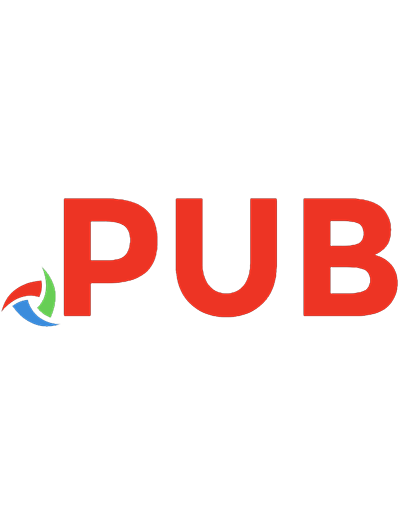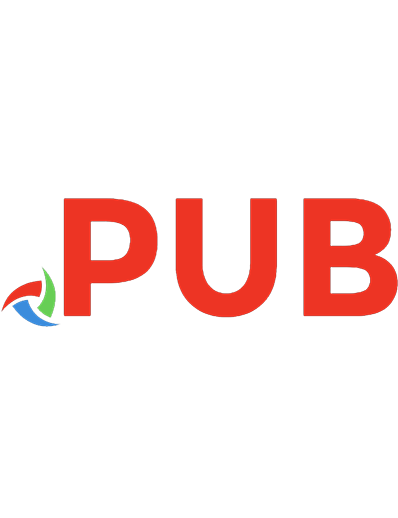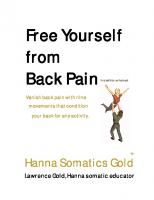Motor Learning Strategies for the Rehabilitation of Back Pain: Feldenkrais Course Manual
502 176 3MB
English Pages 14 Year 1992
Polecaj historie
Citation preview
SENSORY
MOTOR
LEARNING
16194369141
r The Feldenkrais Method® Motor Leaming Strategies for the Rehabilitation of Back Pain Sandy Burkart, PT, Ph.D. Mark Reese, Ph.D.
Feldenkrais
Course Manual
L Course Outline 2. Historical Overview
3. Notes on the Feldenkrais Method
4. Glossary of Feldenkrais Terms 5. Further References
© 1990, 1992 Mark Reese, 160 Chesterfic1dDr., S~. 8, Cardiff by th(-?Sea, CA, 92007, 619..J36 9087
SENSORY
MOTOR
LEARNING
16194369141
P.03
2 1. Course Outline
DayOne 1. Back pain: A practitioner's dilemma 2. An integrated approach to Physical Therapy practice 3. Neurophysiology of spinal pain 4. History and overview of the Feldenkrals Method® 5. Anatomy of the cervical spine 6. Palpation Lunch 7. Basic spinal movement in relation to balance and posture: Flexion 8. A TM application
ATM BasicSet, Lesson#1 SpinalFlexion
, r2, Low BackComfort Chapte Relaxercise
r
9. Functional Integration® applicatton 10. Clinical considerations 11. Basic spinal movements 1n relation to balance and posture: Side bending 12. ATM application ATM Basic Set, Lesson#3, LateralFlexion r6, AligningYour Body , Chapte Relaxercise 13. Functional Integration application 14. Clinical discussion
DayTwo
1. Anatomy of the thoracic spine
2. Palpation 3. Basic spinal movements in relation to balance and posture: Rotation 4. ATM application ATM BllsicSet, Lesson#4, SpinalRotation . r1, EasyFlexibility Chapte . Bela,re,cise 5. FunctionalIntegrationapplication 6. Clinical considerations Lunch 7. Basic spinal movements in relation to balance and posture: Extension 8. ATM application ATM BasicSet, Lesson#2, SpinalExtension
Relaxercise.Chapter3, A HealthySpine
9. Functional Integration application 10. Further clinical considerations 11. Patient demonstration
r
...
SENSORY
MOTOR
LEARNIHC
16194369141
F·. 04
3
r
DayThree 1. Anatomy of the lumbosacral spine 2. Palpation 3. Basic spinal movements in relation to balance and posture: Lengthening the spine, stabilization and breathing 4. ATMapplication
ATM BasicSet, Lesson# 10 , Oscillations 5. Functional Integration application 6. Clinical considerations 7. Patient demonstration Lunch 8. Basicspinal movements in relation to balance and posture: Walking
Walking Awareness through Movement audio-tapes 9. ATM application 10. Functional Integration application t t. Chronic pain: What can we do? 12. Overview, summary: IntegratingFeldenkrais in Physical Therapy practice 2. Historical
r
Overview
Moshe Feldenkrais was born in Russia in 1904and emigrated to Palestine at the age of 13. Like many innovators, he came to his field by a circuitous route, weaving together numerous influences.As a young man, he was an excellent athlete, a soccer player and self• taught in jujitsu. He did construction work and tutored problem students while attending night school preparing to study physics.He had an early interest in hypnosis and translated Emile Chou,•s book on autosuggestion into Hebrew. In Paris,Feldenkrais earned his doctorate in physics at the Sorbonne and assisted Joliot-Curie. During his university years he met Kano, the originator of judo, and trained with Kano's students to become a high ranking black belt and well-known judo teacher. During World War lI, Feldenkrals fled to England where he worked in antisubmarine research during the war, wrote scienttflcpapers, trained paratroopers in selfdefense techniques,and authored books on judo. On slippery submarine decks he aggravated an old soccer injury to his knees, and began the extended work on himself which led to discoveries about movement re-education. After he publicly presented his
ideas, people sought his help with their problems. For several years he was an amateur somatic practitioner,first in Englandand later 1n Israel where he had returned to work as a researchscientist.In the mid-1950's Feldenkraisgave up his career in physics and devoted himself fully to his work with people. In the late 1960's, in Tel Aviv, he trained his first group to become practitioners of his method and he trained two subsequent groups in the United States. He wrote four books on his method and his teaching is preserved in
thousands of hours of audio and videotapes. Moshf Feldenkrais originated two interrelated, somatically based educatJonal methods. The first method, Awareness 11,rough Movement, is a verbally directed technique designed for group work. The second method, Functional Integration, is a nonverbal manual contact technique designed for people desiring or requiring more individualized attention.
,
@
t
1990, 1992 Mark Reese,160Chestcdield Dr., Ste. 8, Cardiff by the Sea, CA, 92007, 619-436 9087
SENSORY
MOTOR LEARHIHC
16194369141
P.05
4
r Awareness Through Movement lessons incorporate active movements, imagery and other fom,s of directed attention. A typical lesson lasts about forty-five minutes and combines a few dozen movements that are thematically organized around a functional
action. Lesson themes may include developmental movements such as rolling, crawling, and standing up; functions such as posture and breathing; systematic explorations of the kinetic possibilities of the joint and muscle groups; and experiments in somatically-based imageryand visualization that pertain to perception, cognitionand other aspects of motor function. These lessons are not "physical exercises"such as calisthenics; they are somatopsychic explorations which foster improvement by assessing inherent neurological competencies, increasing self-awareness, and facllltating new learning. The initial movements are usually very smalJ with an emphasis on ease, comfort, and learning. Gradually students becomes aware of how their musculature, skeleton-indeed, their entire selves..•• are involved as an inextricable whole in every movement. From seed-like beginnings, small movements grow into movements of greater complexity, magnitude and speed. The result is learning to move with greater efficiencyand satisfaction. Awareness ThroughMovementlessons usually evoke a state of deep relaxation. Unlike a typical exercise class, students are not told where the movements are leading or shown what they look like; thus, what ls learned arises organically and as a surprise. Often only one side of the body is physicallyworkedat a time but the other side is worked mentally; that ls, in the imagination. This mental practice refines kinesthetic sensitivity to the point where muscular impulses and patterns are clearly felt and dµferenttated with minimal mobilization. Throughout the lesson, students are guided to integrate and apply newly discovered skills in other functional activltles and domains of life. The individual lessons of Functional Integration are based upou the same logic as Awateness Through Movement. They are used with a broad spectrum of people, from those with physicallimitationsand discomfort, includingneurologicaland must~loskeletal problems, to athletes and performing artists. Although it possesses significant medical and therapeutic benefits, Functional Integration ls neither medical nor therapeutic in its philosophical foundation and methodology; it is learning-based, primarily nonverbal, and directed at enhancing the efficiency,coordination, grace1and self-possession of a person•s movement. Lessons are done with the student lying on a soft but Eirm work table, or standing, or sitting. The practitioner gently touches or moves the student in a variety of ways to facilitate the student's awareness and stimulate orga11iclearning and vitality. Each move in the lesson is part of a communication that Feldenkrais likened to dancing. Through touch, the practitioner partia11ydiscloses or hints at a functional motor pattern, and the student's nervous system responds with altered muscular responses. Gradually, with repetitions and variations, the student assemblesor synthesizes mostly at an unconscious level a new neuromuscular image of movement that translates tnto active pedormance. At the end of a session the practitioner helps the student to integrate the learning in every day life through related movements basedupon the lesson's functional theme and follow-up suggestions.
r r
,·
© 1990, 1992 MarkReese,160 ChesterfieldDr., Ste. 8, Cardiff hv the ~a.CA
l.1, No. 2, Spring 1971. "The Story of Hanoch's Return to the Flute." Somatics,Vol. 2, No. 3, Autumn 1979. "The Problem of Pain Produced by Faulty Functioning." Somatics, Vol. 3, No. 2, Spring/Summer 1981.
Additional Selected Refe.rences Edleman, Gerald M., Brtcht Air. Brilliant Fire, Basic Books, 1992. Kelso, J. A. Scott, Human Motor Behavior, Hillsdale, NJ: Lawrence Erlbaum Associates, 1982. (Chapters 10, 11 and 12.) M. T. Turvey, Hollis L. Fitch and Betty Tuller, Authors. Chapter 10, "The Bemstein Perspective: 1. The Problems of Degrees of Freedom and Context-Conditioned Variability." Chapter 11, "The Bernstein Perspective: 11. The Concept of Muscle Linkage or Coordinative Structure ." Chapter 12, 'The Bernstein Perspective: 111. Tuning of Coordinative Structures with Special Reference to Perception." Luria Reed, Reed, Edward S., "An Outline of a Theory of Action Systems," from Journal of Motor Behavior, 1982, Volume 14, No. 2, 98-134. Rosenfield, Israel, Jhe Strange, Familiar andFor~otten, Alfred A. Knopf, New York, 1992.
Sacks Selected Audio and Video Tapes on the Feldenkrais Method
"ATM Basic Set," Feldenkrais lessons recorded live from Mark Reese's classes (six cassettes, twelve 45 minute lessons). "Walking Awareness Through Movement," recorded by Mark Reese (three cassettes, five 30 minute lessons) . "Relaxerdse," produced by Sensory Motor Learning systems, (six cassettes, twelve 25 minute lessons). "TMJ Health," produced by Sensory Motor Leaming systems, (six cassettes, twelve 25 minute lessons) . "Integrating the Feldenkrais Method in Physical Therapy Practice," a two-hour video seminar featuring Sandy L. Burkart, PT, Allison Rapp and Mark Reese, Ph.D. The above video and audio tapes are available from the Reese Movement Institute .
ftor a directory of graduates of accredited Feldenkrais Professional Training Programs , contact: The Feldenkrais Guild P.O. Box 489, Albany, OR, 97321. (503) 926-0981. For further information regarding Feldenkrais Method books, audio tapes , pr ofessional training , workshops or seminars, contact : The Reese Movement Institute, 160 Chesterfield Drive, Suite 8, Cardiff by the Sea, CA, 92007. (619) 436-9087
r~
© 1990, 1992 Mark Reese, 160 ~ hesterficld Or.,; Ste. 8, Cardiff by the Sea, CA, 92007, 619-436908i
'
/
[_





![Stop Sciatica Now - Help Yourself Eliminate Back and Leg Pain (Feldenkrais based) [3rd Edition]
0977910202](https://dokumen.pub/img/200x200/stop-sciatica-now-help-yourself-eliminate-back-and-leg-pain-feldenkrais-based-3rd-edition-0977910202.jpg)




